Unlocking Operational Excellence: A Beginner’s Guide to Harnessing the Power of Lean Six Sigma
Updated: February 22, 2024
Published: February 20, 2024
Manufacturers are built on processes, products, and people. To grow and be successful, they must focus on continuous improvement so their operations run smoother and produce better results.
One methodology commonly used in the manufacturing industry to do just that is Lean Six Sigma. Gina Tabasso, owner of Barracuda B2B Marketing and Director of Marketing from Vacavia Cottages & Cabins, in a recent #USAMfgHour chat on X, gave an introduction to this methodology.
Decoding the Symbol
The chat began with host Tabasso sharing the symbol pictured below and asking if any participants knew what it meant.

Nigel Packer from Pelatis Online quickly responded, “The number 6 and the 18th letter of the Greek alphabet – Sigma.”
“I recognize the number 6 but have to say I don’t know the other symbol…one of the downsides to never pledging a sorority, I suppose,” joked Whitney Koch from Keystone Click.
Replying to Koch, host Tabasso wrote: “Neither did I. I just learned this symbol recently. She’s purty [sic], isn’t she?”
Anna and Savannah Scheller from Capri Temporary Housing said, “Looks like a letter of the Greek alphabet, but we’re not sure which one…!”
“Six Sigma of course!” asserted Dave Meyer from BizzyWeb. “I’m no black belt, but I know my greek [sic].”
Kati McDermith from MNI, Inc. knew the answer as well. “Six Sigma,” she said.
Demystifying LSS
After confirming that the symbol means Six Sigma, host Tabasso asked participants if they were familiar with the initialism “LSS” and if they knew what it stood for.
“Not me – this is going to be ‘learning hour’ for me!” Meyer said. The Schellers answered, “We definitely googled it when we saw the topic for today’s chat, but hadn’t heard of it prior to that.”
“Thanks for being curious and interested!!!” host Tabasso responded.
Sharing her background knowledge, McDermith said, “I have heard of Lean Sigma Six but know very little. My dad specialized in it and my friend is a black belt I believe (?)”
Replying to McDermith, host Tabasso said, “That’s way more than most people know unless you are in manufacturing operations.”
“No idea. Looking forward to this.” answered business owner and entrepreneur Pavel Stepanov.
“LSS?” wondered Ruby Rusine and the team from Social Success Marketing. “The first thing that came to mind was Last Song Syndrome. So, we’re really here to learn.”
Packer, who is from Wales, shared his international perspective. “It was abbreviated to Lean here in the UK. I always remember the term ‘Murder Muda’ – Kill waste”
“Here, Lean and Six Sigma are two separate things that work together.” host Tabasso replied.
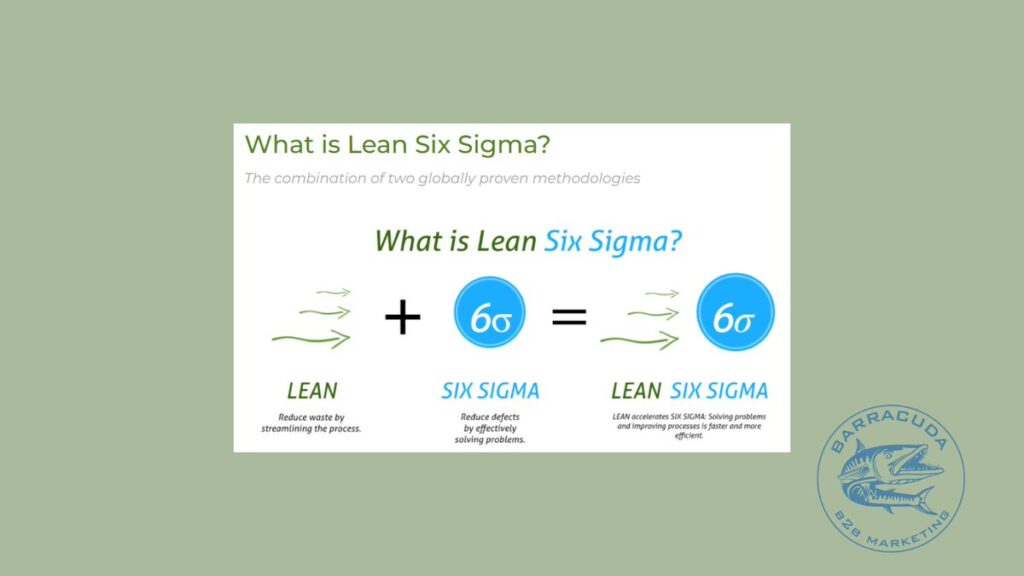
Host Tabasso confirmed that LSS stands for “Lean Six Sigma,” which is a mashup of the separate Lean and Six Sigma process improvement methodologies.
The Purpose of Lean Six Sigma
The chat then responded to the question, “What is the purpose of LSS?”
“[T]o do things better and faster?” McDermith wondered.
Host Tabasso replied in the affirmative. “Good summary, Kati,” she said.
Koch answered, “The only thing I know about Lean and Six Sigma is they’re about processes.”
“Really great! Exactly right.” Tabasso said in response.
Meyere said, “LSS helps teams and companies improve processes and deliver faster.”
“Nice job!” praised Tabasso. “And more efficiently,” she added.
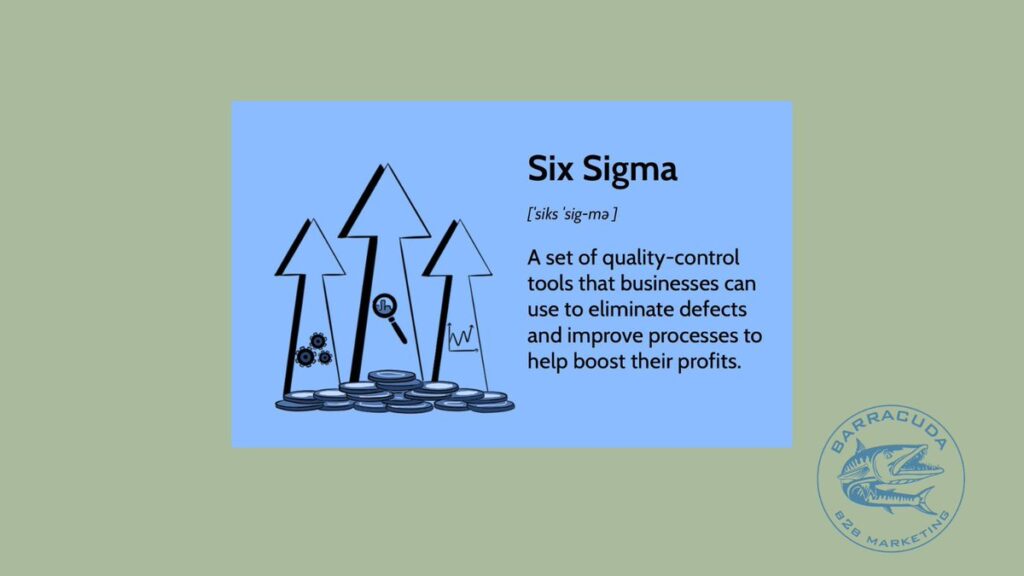
Citing Wikipedia, Tabasso wrote: “Six Sigma is a set of techniques and tools for process improvement. It was introduced by American engineer Bill Smith while working at Motorola in 1986.”
“Motorola?!” McDermith replied in surprise. “I used to sell cell phones back in the day when the flip phones were ‘new.’”
The Schellers added, “Woah, sounds like it’s pretty tried and true!”
Industries That Can Be Improved With Lean Six Sigma
Once chat participants had a basic understanding of the purpose of Lean Six Sigma, host Tabasso asked them to consider who the primary users of this methodology might be.
“Manufacturers of course, but also lots of businesses in knowledge work and consulting,” Meyer said. “Anyone who needs process improvement and where quality and speed are paramount.”
Stepanov was of a similar mind. “Manufacturers,” he answered.
“Yes, sir!” host Tabasso said in response.
“We’re not sure,” the Schellers said. “Gonna keep an eye on the experts for this answer.”
“Production facilities?” wondered McDermith.
Pondering her response, Koch asked, “Folks in operations and project management??”
“Definitely!” host Tabasso affirmed.
Host Tabasso closed this portion of the conversation confirming some participants’ answers: Though Lean Six Sigma is used primarily by manufacturers, it can be applied to a variety of industries. Tabasso added that she has personally used this methodology for various projects at a university, a steel company, and a tiny home manufacturer. These types of companies also often use Six Sigma: automotive, aerospace, aircraft, biotech, chemical, clothes, shoes, electronics, construction equipment, foods, metals, paper, textile, and wood products.
Key Principles of Lean Six Sigma
Knowing that many industries use the Lean Six Sigma methodology to improve processes, host Tabasso asked participants to consider what its principles might be.
“Based on what people have said in this chat, efficiency and elimination of excess investment (energy or money) are two we’d guess,” said the Schellers.
Koch stated, “Creating efficiencies by streamlining and figuring out ways to improve production quality.”
“No idea about the basic principles but we bet it must have something to do with efficiency, waste reduction, and process optimization,” responded virtual assistance service provider VirtuDesk.
“I know Agile project management is part of it,” said Meyer.

There are five key principles of Six Sigma: customer focus, data-driven analysis, proactive improvement, cross-functional collaboration, and thoroughness and flexibility.
The 5 Steps of the Lean Six Sigma Process
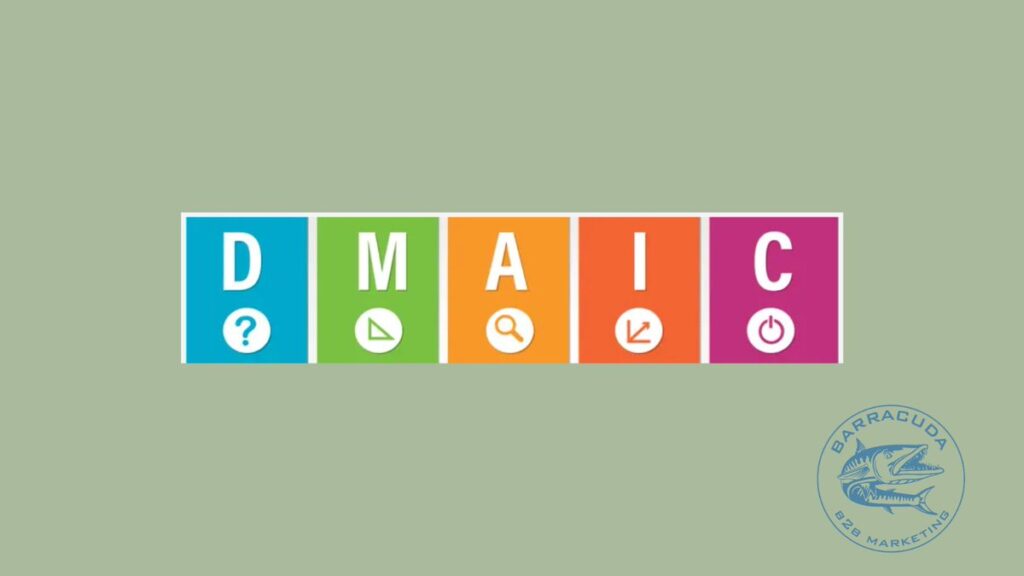
The Lean Six Sigma process has five steps that partially correspond with the five principles of Six Sigma. These steps are summarized by the acronym DMAIC. Host Tabasso asked participants if they knew what any of the letters stood for.
“The little icons are helpful!” Koch said, referencing the image host Tabasso shared with her question. “D-?? M-Measure A-Analyze I-Inspect? C-Control?”
McDermith replied, “‘Document’ and other stuff I don’t know.”
“That is a good thought!” host Tabasso said in response to McDermith. “Document is actually part of all the stages!”
Koch added, “Good guess! I can definitely see how documentation would be key to LSS.”
Several participants were stumped. “We’re excited to know what these letters stand for,” Rusine said.
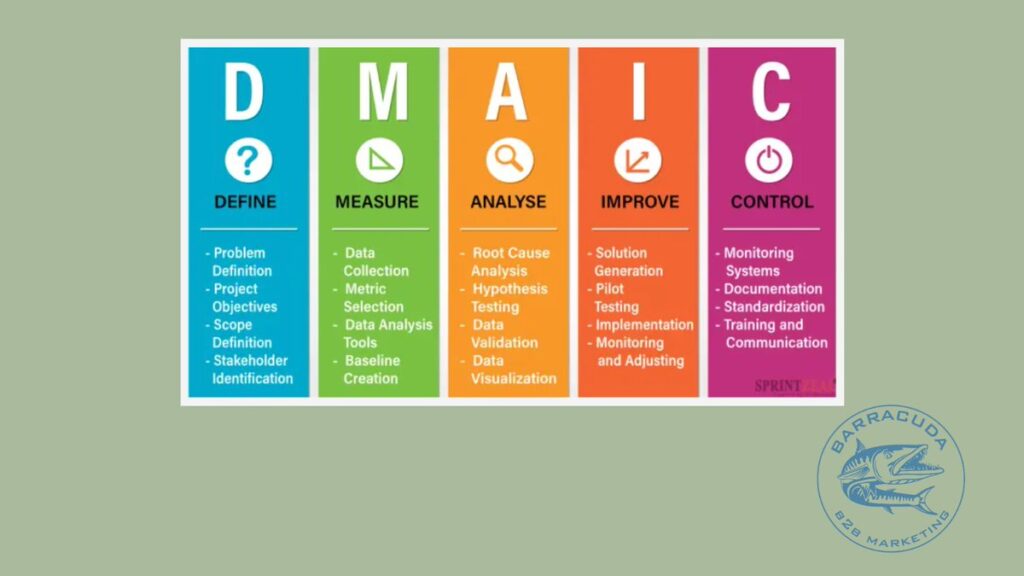
Clearing up the confusion, host Tabasso explained that DMAIC stands for Define, Measure, Analyze, Improve, and Control.
“That makes more sense! Good thing you are leading today!” McDermith said.
The Importance and Benefits of Lean Six Sigma
Lean Six Sigma helps manufacturers make their processes more efficient, but why is the important? Host Tabasso asked participants to consider how any organization would benefit from utilizing this methodology in their business.
“Process improvement and optimization, and risk reduction which can increase business productivity,” VirtuDesk answered.
Stepanov liked their response. “I second this,” he said.
The Schellers had more to add. “There are so many answers to this question! We imagine it’s incredibly effective at not only improving profit margins but also increasing revenue, reducing turnover, and eliminating resource-drains.”
“Can you get ISO certifications out of it?” McDermith wondered, calling to mind ISO 9001, the most common standard in manufacturing for ensuring consistent quality in products and processes.
Responding to McDermith, Tabasso said: “Six Sigma can be applied to ISO but it isn’t part of the certification process. [B]ut great connection! They work together.”
“Usually more efficient processes mean saving time and money,” Koch answered.
In addition to the replies supplied by chat participants, host Tabasso added these benefits: save time, save money, avoid rework, improve profits and employee morale, reduce waste, minimize defects, and increase the quality of products or services.
Stepanov and McDermith reacted positively to host Tabasso’s list of benefits. “I like this answer,” Stepanov said. “I like the sound of that,” added McDermith.
Beyond Manufacturing: Additional Applications for Lean Six Sigma
Because the #USAMfgHour chat focuses on the manufacturing industry, it makes sense that Lean Six Sigma can be applied to manufacturing operations with great results. Tabasso asked participants to consider whether this methodology could be implemented to other areas or roles.
“I can see how this would work just as well in a sales/marketing role too,” McDermith said.
Validating McDermith’s answer, Tabasso said, “Anywhere you could improve a process and find variation and errors.”
“I would think you could apply it to any process, regardless of role or industry,” Koch said.
Packer shared his own experience utilizing these methodologies. “Yes I have applied the principles of Six Sigma and lean to many service projects to reduce waste and improve customer relations for clients. The use of the FMEA process is a good one that works well for supply chain and process improvement.”
Host Tabasso gave this insight into how she employed these methodologies: “I did Six Sigma projects to find a new printer to save money and increase quality; a test of Adobe InCopy to decrease printing costs, save time, and decrease error rates; and to implement a better customer satisfaction process using net promoter score surveys to all current and former clients.”
The Six Sigma Belts

According to host Tabasso, Six Sigma has six “belts.” She challenged chat participants if they knew what the best are or what they signify.
This stumped many participants. “Not in the slightest. Time to watch the responses and do some learning!” the Shellers said.
“Absolutely clueless,” added Rusine.
Referring to the picture host Tabasso shared with the question, Koch responded. “Guessing from the picture that they’re similar to the different colored belts you can earn in martial arts. But I am not sure what they would signify.”
“[N]o, but I have always wanted to know,” said McDermith.
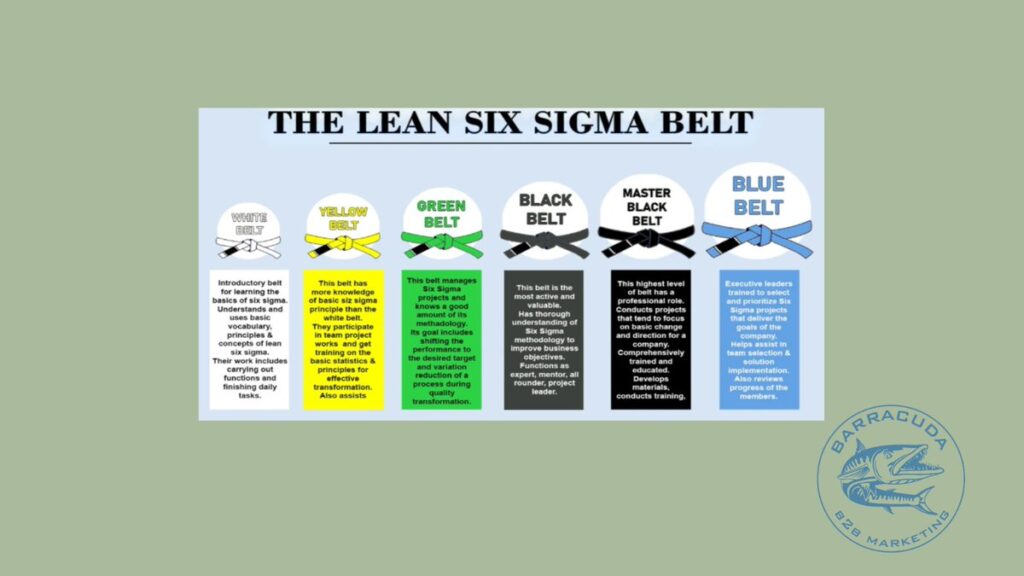
To explain, host Tabasso said that Six Sigma practitioners earn colored “belts” like those in karate. As explained in the image, belts are earned for progressing in the knowledge of Six Sigma and applying the methodology to projects. Host Tabasso said, “I have my Yellow and Green Belts, am working on my Black Belt, and have done 7 Six Sigma projects.”
Conclusion
As a Lean Six Sigma practitioner, host Tabasso concluded the chat by offering herself as a resource for anyone who has questions and sharing this overview article so participants can learn more on their own.
Participants shared their gratitude with host Tabasso.
“Thanks so much for hosting and for the lesson! Really appreciated!” said McDermith.
Software developer DCSC, Inc. agreed: “Excellent job Gina! I learned three new things today. Thank you for hosting.”
“Gina, thank you so much for hosting and demystifying LSS for me! Best of luck as you work on your next belt,” added Koch.
Rusine replied, “Thanks for hosting, Gina! We learned many new things today!”
“Thanks for hosting and teach[ing] us so much! It was phenomenal,” the Schellers said.
About #USAMfgHour
Anyone who champions U.S. manufacturing can join in on a new conversation each week on Twitter (X) using the hashtag #USAMfgHour. The chat starts at 11 a.m. Pacific Standard Time/2 p.m. Eastern. Share positive blog posts, helpful articles, news, important information, accomplishments, events, and more with other manufacturers and supporters from throughout the country.
Are you interested in hosting a #USAMfgHour chat? Contact organizers @DCSCinc, @SocialSMktg, and @KeystoneClick.
To learn more about how Keystone Click can help you level up your online presence, contact us.